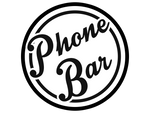
Premium OLED vs Budget LCD: What's the difference?
Premium OLED vs Budget LCD: What's the difference?
Are you wondering about the difference between OLED and LCD screens? It's a common confusion, but fear not! Let's dive into the topic and shed some light on both screen technologies, so you can make an informed decision.
OLED, short for organic light-emitting diode, has been utilized by Samsung for a while and is now embraced by Apple as well. You might be familiar with its higher price tag if you own an iPhone X, XS, XS Max, 11 Pro, Max 12, 12 Mini, 12 Pro, Max 13, 13 Pro, or the 13 Pro Max, as these models feature OLED screens. The newest iPhone 14 series (iPhone 14, iPhone 14 Plus, iPhone 14 Pro and iPhone 14 Pro Max) also contain the premium OLED screens.
Now, let's unravel the mystery. What sets OLED apart from LCD, which is found in the later models like the iPhone XR and 11?
Comparing OLED and LCD Screens
If you own one of the newer devices above, you may be wondering why it costs more to repair your device - we'll try and breakdown what goes in to each screen to shed some light on the matter:
Budget LCD (liquid crystal display):
LCD screens have been in use for a long time, including in iPhones. Apple still incorporates them in their more affordable models like the iPhone XR and iPhone 11. Visually, LCD and OLED screens may appear similar, but the budget LCD option comes at a significantly lower cost.Advantages:
- Longer lifespan and increased durability.
- Cheaper to manufacture, leading to lower costs.
- Provides more accurate colors without image burn-in concerns.
- Less expensive to replace if damaged.
Disadvantages:
- Limited contrast compared to OLED.
- Backlight "leakage" may occur.
- Sensitivity issues might arise.
- Backlight usage results in higher battery consumption.
- iPhone 11
- iPhone XR
- iPhone 8 Range
- iPhone 7 Range
- iPhone 6/6s Range
- iPhone 5/5s Range
- iPhone SE 2020
Premium OLED (organic light-emitting diode):
These screens are made using a flexible plastic substrate, offering a longer lifespan and increased impact resistance. OLED screens illuminate themselves using organic light-emitting diodes, resulting in a better fit within the iPhone's casing.Advantages:
- Improved image quality with better contrast.
- Higher brightness levels.
- Fuller viewing angle.
- Wider color range.
- Faster refresh rates.
- No need for a backlight, leading to lower power consumption and extended battery life.
- Thinner screen profile.
- More flexible and transparent display.
- Minimal color shift when viewed from different angles.
- Higher repair costs if damaged or broken.
- Possibility of image burn-in, dead pixels, or subpar color reproduction.
- Wear and tear is more prominent due to the flexible panel.
- Expensive to manufacture.
Found in these phones:
- iPhone X
- iPhone XS
- iPhone XS Max
- iPhone 11 Pro
- iPhone 11 Pro Max
- iPhone 12
- iPhone 12 mini
- iPhone 12 Pro
- iPhone 12 Pro Max
- iPhone 13
- iPhone 13 mini
- iPhone 13 Pro
- iPhone 13 Pro Max
- iPhone 14
- iPhone Plus
- iPhone 14 Pro
- iPhone 14 Pro Max
Which screen should I choose for my repair?
We don't offer a budget LCD version of screen for any of the OLED models - there are too many issues that can arise; such as reduced battery life, increased touch issues and software issues, shorter lifespan of repaired parts.
You may be tempted to go for a cheaper repair at the time - though we can say with certainty that a budget LCD screen fitted to a premium OLED device will not last, and can also cause issues further down the line often causing issues with the logic board and other components such as Face ID, Apple Pay and GPS.
On some of the newest devices, we will only the genuine repair parts through Apple (we're an Independent Repair Provider with Apple, meaning we have access to genuine parts, genuine tools and the correct repair procedures and qualifications). This is because the third-party parts available for those devices do not yet meet the strict requirements of repairs our customers have come to expect from Phone Bar.
Get a repair quote instantly online now here.
